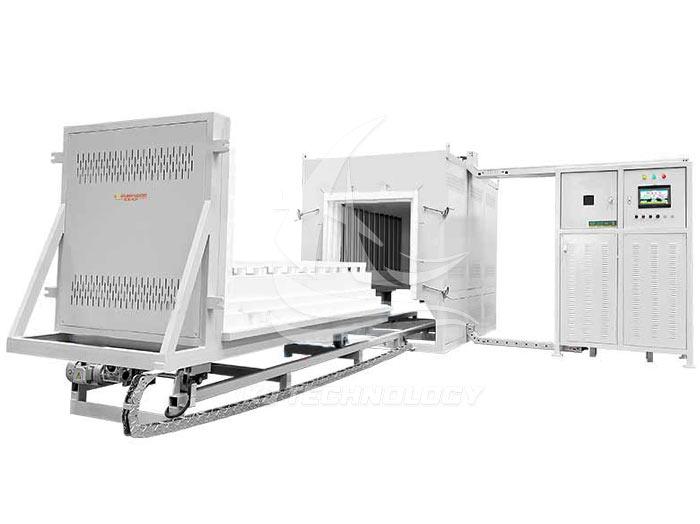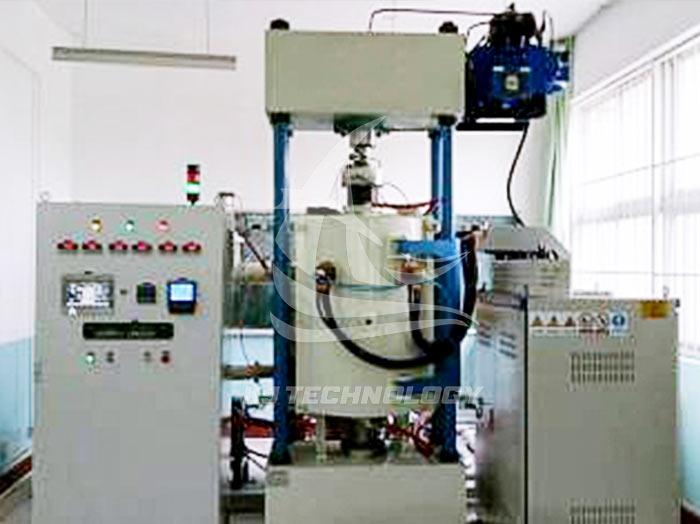What gases can be used in a small vacuum furnace for experiments?
 10-21-2025 Author: KJ technology
10-21-2025 Author: KJ technology
Small vacuum furnaces used in experiments can be filled with various gases according to experimental needs, mainly divided into three categories: inert protective gases, reactive gases, and mixed functional gases. These gases play a role in protecting, reacting, or regulating the atmosphere during material processing, and the specific selection should be based on material characteristics, process objectives, and safety requirements. The following are detailed classifications and typical applications:
1. Inert protective gas: prevents oxidation and pollution
Inert gases have stable chemical properties and are mainly used to isolate oxygen, avoiding material oxidation or contamination at high temperatures. They are suitable for experiments with high purity requirements.
Argon gas (Ar)
Characteristics: Colorless and odorless, with a density 1.38 times that of air, and extremely strong chemical inertness.
Application:
Metal heat treatment: High speed steel and titanium alloys are quenched under Ar gas protection, with no oxide layer on the surface and increased hardness.
Semiconductor annealing: Silicon wafers are annealed at 1000 ℃ in Ar gas, resulting in a decrease in surface defect density and an increase in carrier mobility.
Flow control: The typical flow rate is 5-20 L/min, which needs to be precisely regulated through a mass flow meter.
Nitrogen (N ₂)
Characteristics: Colorless and odorless, accounting for 78% of the air, chemically stable, but may react with certain metals at high temperatures.
Application:
Stainless steel annealing: 304 stainless steel is annealed at 850 ℃ in N ₂ gas, which has a higher internal stress relief rate and better surface finish.
Ceramic sintering: Aluminum nitride (AlN) is sintered at 1800 ℃ in N ₂ gas, resulting in increased density and higher thermal conductivity.
Caution: Avoid direct contact with active metals such as titanium and zirconium to prevent the formation of nitrides.
Helium (He)
Characteristics: Colorless and odorless, density 0.14 times that of air, high thermal conductivity, but high cost.
Application:
Rapid cooling: The metal foil is cooled from 1000 ℃ to room temperature within 30 seconds in He gas, and the grain refinement effect is significant.
Leak detection: Utilizing the small and easily diffusive properties of He gas molecules to test the sealing of the furnace body.
Flow control: The typical flow rate is 2-10 L/min, which requires the use of an efficient cooling system.
2. Reactive gases: participate in chemical reactions
Active gases can undergo chemical reactions with materials and are used in processes such as reduction, carburizing, and nitriding, requiring strict control of concentration and flow rate.
Hydrogen (H ₂)
Characteristics: Colorless and odorless, flammable and explosive, strong reducibility, requiring explosion-proof devices.
Application:
Metal reduction: Iron oxide powder is reduced at 1000 ℃ in an H ₂ atmosphere, resulting in higher purity of iron powder and lower oxygen content.
Carburizing treatment: 20CrMnTi steel is carburized at 900 ℃ in a mixture of H ₂/CH ₄ gas (volume ratio 9:1).
Safety requirements: The hydrogen concentration must be less than 4% (lower explosive limit), and the experiment requires the presence of two or more people. The exhaust gas must be treated by catalytic combustion.
Methane (CH ₄)
Characteristics: Colorless and odorless, flammable, decomposes to produce carbon and hydrogen gas.
Application:
Chemical vapor deposition (CVD): By introducing CH ₄ and H ₂ (volume ratio 1:3), diamond films are deposited under vacuum at 800 ℃, resulting in better thickness uniformity.
Carburizing process: mixed with H ₂ for surface hardening of low carbon steel to improve wear resistance.
Flow control: The typical flow rate is 0.5-2 L/min, which requires the use of a precise proportional valve.
Ammonia gas (NH3)
Characteristics: Colorless with a pungent odor, decomposed to produce nitrogen and hydrogen gas.
Application:
Nitriding treatment: 38CrMoAl steel is nitrided at 520 ℃ in an NH3 atmosphere, resulting in higher surface hardness and improved wear resistance.
CVD deposition: SiH ₄ and NH3 (volume ratio 1:3) are introduced to deposit silicon nitride thin films under vacuum at 800 ℃.
Attention: NH ∝ is corrosive and requires the use of stainless steel pipes. The experiment should be conducted in a fume hood.
3. Mixed functional gases: achieving complex processes
By mixing multiple gases, composite processes such as carburizing, nitriding, and carbonitriding can be achieved, or specific atmospheric environments can be simulated.
H ₂/Ar mixed gas
Proportion: The typical volume ratio is 1:9 (H ₂: Ar).
Application:
Metal reduction: Copper oxide powder is reduced at 800 ℃ in H ₂/Ar mixed gas, resulting in higher purity of copper powder and lower oxygen content.
Protective atmosphere: Used for heat treatment of oxygen sensitive materials, such as lithium-ion battery cathode materials.
Flow control: The total flow rate is 5-20 L/min, accurately proportioned through a mass flow meter.
N ₂/CH ₄ mixed gas
Proportion: The typical volume ratio is 9:1 (N ₂: CH ₄).
Application:
Carbonitriding: 45 steel is treated at 860 ℃ in a mixture of N ₂/CH ₄ gas, resulting in higher surface hardness and smaller infiltration depth.
Composite deposition: used for depositing carbon nitride thin films to improve the corrosion resistance of materials.
Attention: It is necessary to control the concentration of CH ₄ to avoid carbon deposition.
Ar/H ₂/CH ₄ three component gas
Proportion: The typical volume ratio is 85:10:5 (Ar: H ₂: CH ₄).
Application:
Diamond deposition: Deposition of polycrystalline diamond films at 800 ℃ vacuum, with higher hardness, used for tool coating.
Complex infiltration layer: used for preparing gradient functional materials, such as composite structures with hard surface and tough core.
Equipment requirements: Multiple gas inlet systems and precise proportional valves must be equipped.
4. Gas selection principles and safety regulations
Selection Principle
Material compatibility: Reactive metals (such as titanium and zirconium) should avoid using N ₂ and are prone to generating nitrides.
Process objective: Select H ₂ for reduction reaction, CH ₄ for carburizing, and NH ∝ for nitriding.
Cost effectiveness: Ar gas has low cost, while He gas has good thermal conductivity but high price, which needs to be balanced for use.
Safety Specifications
Explosion proof design: Hydrogen experiments require explosion-proof electrical appliances, hydrogen concentration detectors, and automatic shut-off devices.
Ventilation system: The experiment is conducted in a fume hood, and the exhaust gas is treated by catalytic combustion or alkali absorption.
Operation training: Experimental personnel need to receive gas safety training and be familiar with emergency response procedures.








